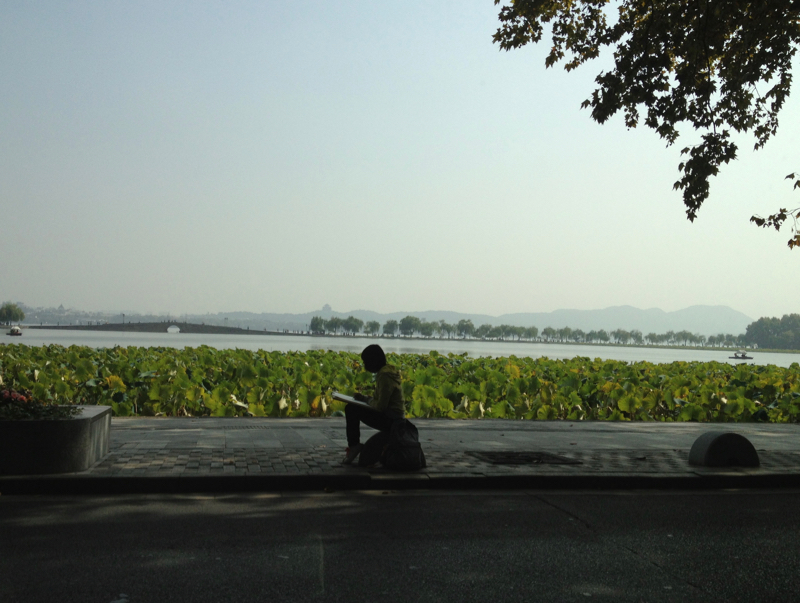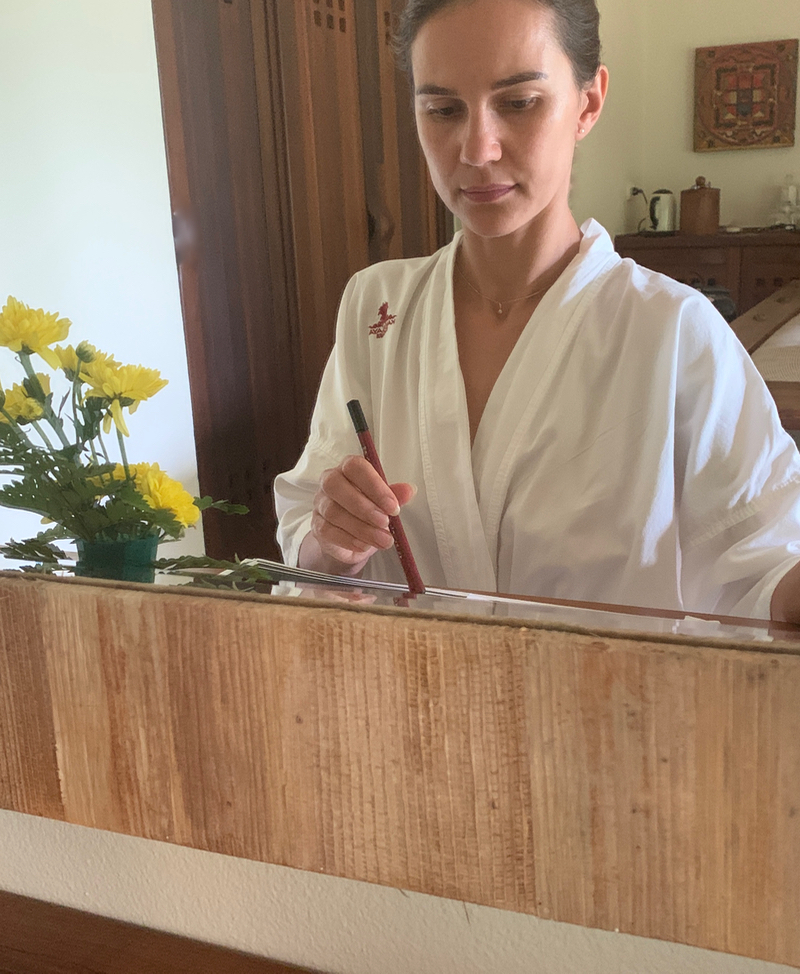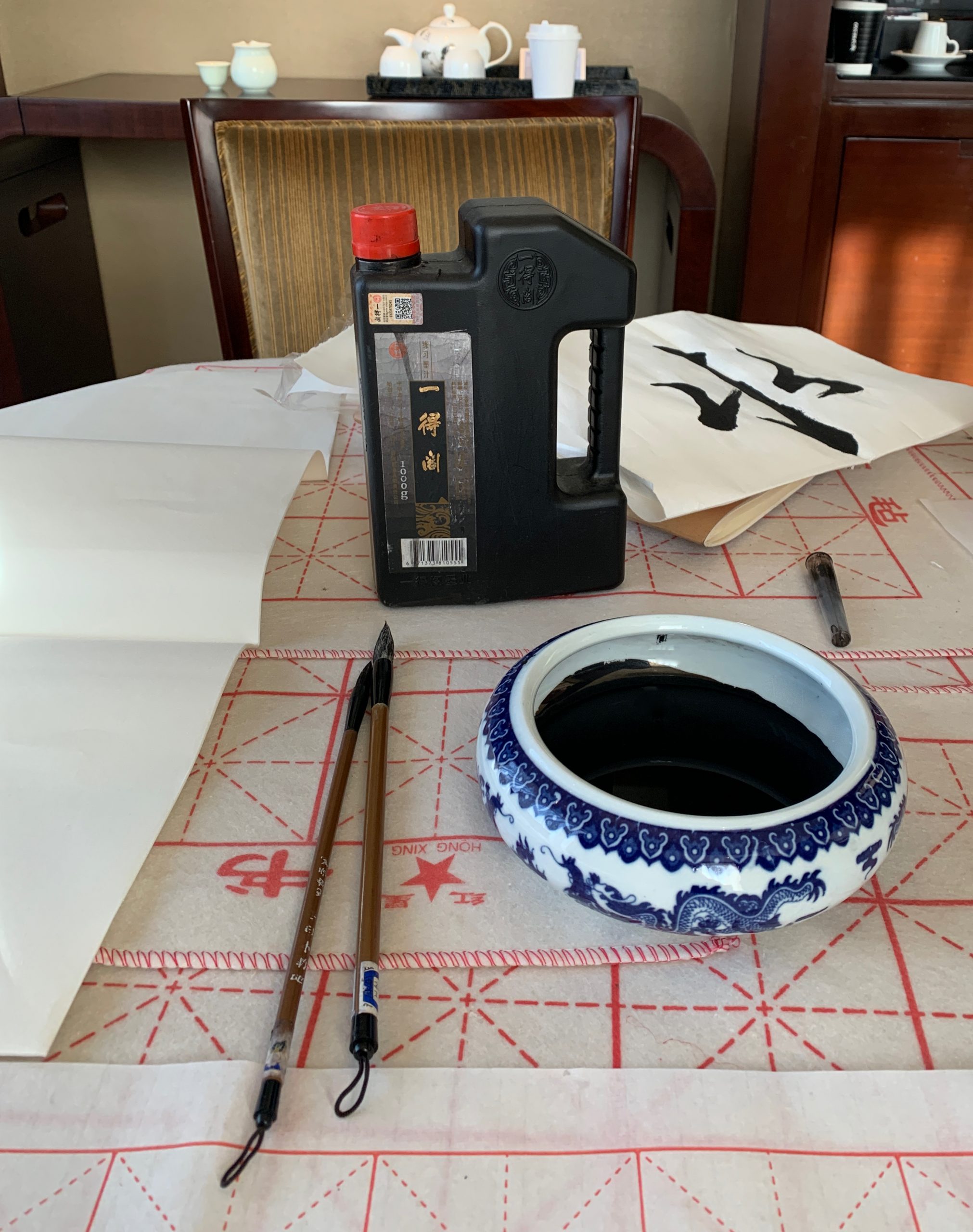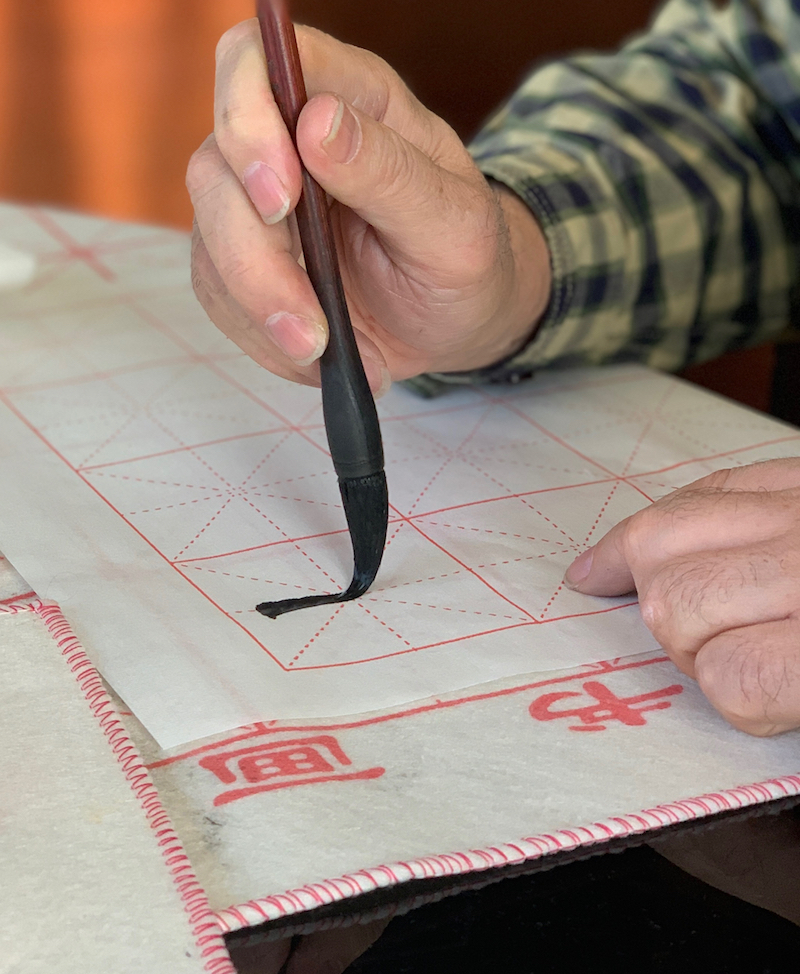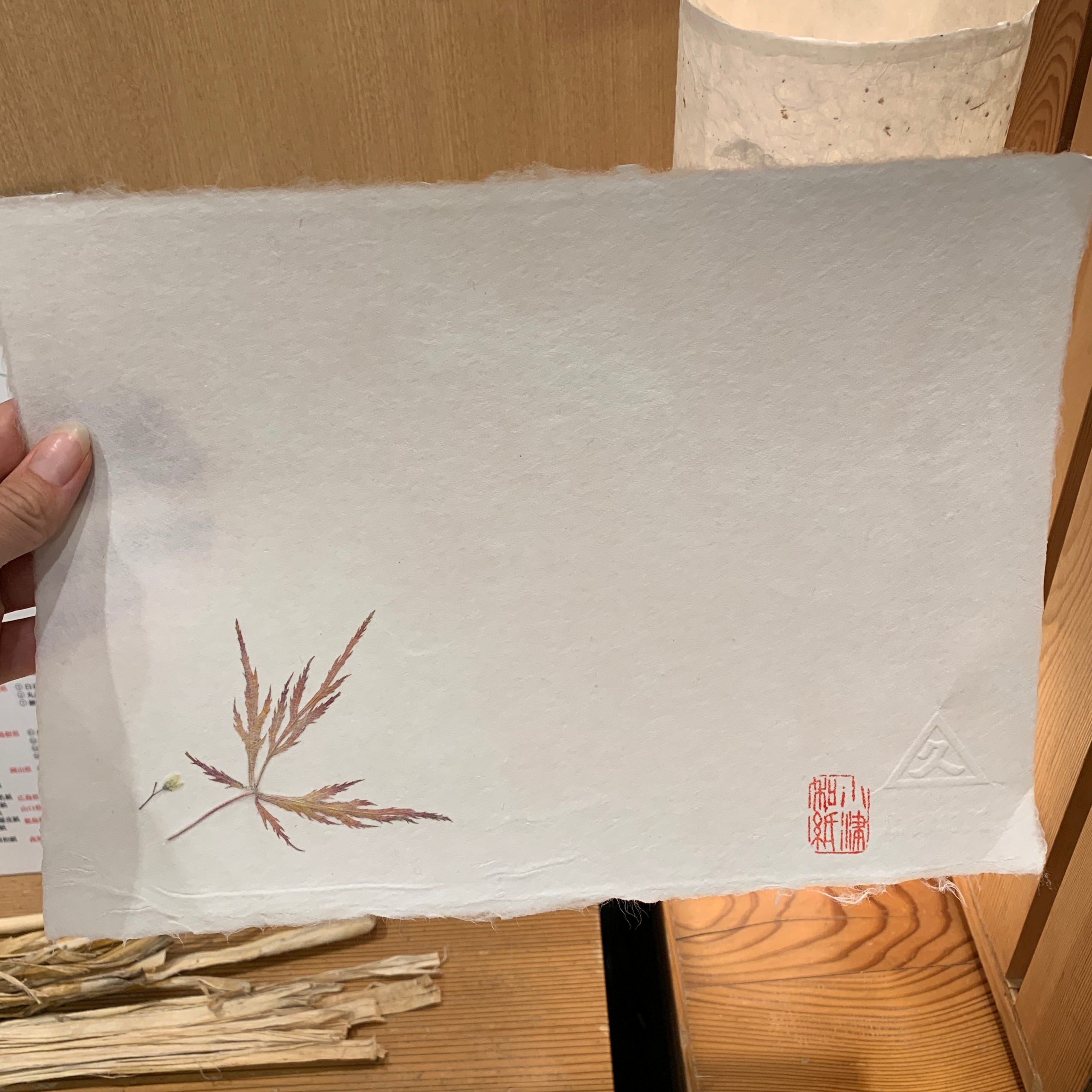Inner Calm: Learning the Art of Chinese Calligraphy with a Master in Beijing
Learning the art of Chinese calligraphy with a master of the craft was on my wish list for a few years. I only wanted to study with someone truly eager to share their knowledge, a passionate expert in calligraphy. I have a long history with China. I have been visiting the country for more than 15 years. Cruising the Mainland from the North through the coast to the South, megacities to villages in the “clean” Southwest where nature casts its magnificence over the millions of visitors today. When I came in the early 2000s, the Chinese tourism was incomparably minimal. How profoundly has that changed! Then, the experience was uncluttered by the masses eager to snap as many self-promoting photos with their mobile devices as the space allows for. In their rather uncultured and rough disregard for others, I was struck by these people who were clumsily ascending back on their saddle. We live in a global world, with an easy commute and travelling so cheap the billion nation can fly where it wants en masse.
Return to ancient traditions fostering inner calm
Witnessing the upheaval as a Western bystander, I desired to do something ancient. Living in Taiwan about 15 years ago illuminated the treasures of the ancient Chinese culture for me. There, unimpeded by the Cultural Revolution that stiffened the heritage on the Mainland, Chinese crafts and traditions thrived. Rewinding to the rich culture of the East and the essence and greatness of China itself, I took on qi-gong, tai-chi and eventually grasped the brush. Soaking it in ink, I stroke the paper with my own calligraphy. These ancient Chinese arts taught me a lot about myself and the nature of experience.
Power of calligraphy as vehicle of art, culture, information and mindfulness
Learning Chinese calligraphy is about understanding better the spiritually advanced culture of China. Printed word and art has always been censored or burned by power-gripping rulers anywhere. The First Universal Emperor Shih Huang Ti shortly after unifying China in 221 BC ordered destruction of works by Confucius and his scholars. As change is the universal rule of life, the author and translator of Sun Tzu‘s essential The Art Of War, Samuel B. Griffith writes, that “the later Emperor Wu offered generous rewards to all those who presented copies of ancient works”. Times change, and the lucky surviving works continue to enlighten us. Information has always been valued highly by humans, and art as well as calligraphy inherently preserve and transmit ideas as the data in our electronic devices do today. Information wars may yet to surprise us in the near future.
Oneness mediated through brush, paper, and the mind on paper
Paper, ink, paintbrush and tea – the utensils for learning the art of Chinese calligraphy were mainly invented by its people. I linked each to Britannica if you are curious to know more about the tools of this craft. The practice has penetrated the Chinese culture in a more even gender distribution – high class ladies enjoyed calligraphy and tea as did their educated male compatriots. Compared with the traditionally misogynist Japan, China was well ahead with female empowerment, preceding the West in such matters by centuries. Broadly shared with the world fascinated by their usefulness and sophistication, some of the holistic aspects of calligraphy have not travelled successfully. Practicality stole all the attention in the written craft, yet it is changing now. As we type, something is missing, and so these slow craft skills are now being rejuvenated by quality life seekers. I attended a popular Western calligraphy class by Quill in London, while a friend in Tokyo teaches the elderly who have the time as much as children to perfect their kanji.
The art of focus and self-cultivation
Tea keeps one’s focus on high yet relaxed wavelength. Like meditation, yoga or to China closest Qi Gong and tai-chi, calligraphy and mindfully savouring tea are the practices of cultivating one’s potential — the energy to create and do what is best for you and the world. The Qi energy is the life force that ayurveda, the oldest system of medicine, and yoga, define as prana, that what makes life moving. I’ve been intermittently practicing all these ancient cultivators of calm, bliss and health. I learned that when done properly with mindful attention, they all bring about a wonderful state of being. An existence that flows smoothly and can transform what you do or create artistically. Calligraphy can visually express this state. The feeling that these body-mind unifying techniques harness and free is hard to match in all other human experience. We need this sensation more in this age of distractions.
Technical aspects of Chinese calligraphy
Black ink still dominates calligraphy. Light, the intensity of the paint, the pressure exerted by the artist on the brush, open a rainbow of possibilities for all shades of black. I spent a day with a Kyoto-based, Hawaii-raised Japanese brush artist, who opened my perception to a broader understanding of the colour black. She said: “Black is never so simple. There is enough depth. Other colours would steal it.” And so does white paper. The bright, cellulose-based canvas, highlights the black ink best. For art, it is still handmade to a desired thickness and grain size like the washi paper in Japan (read more about mywashi making experience). See below the brush art by Rei Omori to understand why.


In the book The Way of the Brush, Painting Techniques of China and Japan (in my library), Fritz van Briessen distinguishes the lines as “gold-line”, “splashed ink” and “broken-ink” styles next to “watered shaping lines”. He references painting, not calligraphy per se, yet the two have been linked for millennia, and artistic calligraphy uses these painting techniques as well.
In fact, as with the endless interpretations of the classical “Six Principles of Hsieh Ho” for Chinese painting (471-501) it is a proof that art has no boundaries, and no limits can be cast on the art of Chinese calligraphy. Sometimes, you can hardly decipher the characters and the meaning. When done skilfully, the meaning reveals itself through the shapes and the energy radiating from the piece. Don’t you look at Chinese calligraphy, but also Japanese, Islamic, Farsi, Hindu, and other calligraphy art hanging in museums? Sometimes the meaning is not translated, for the curators believe that the viewer shall feel instead of analysing logically the scroll or engraving.

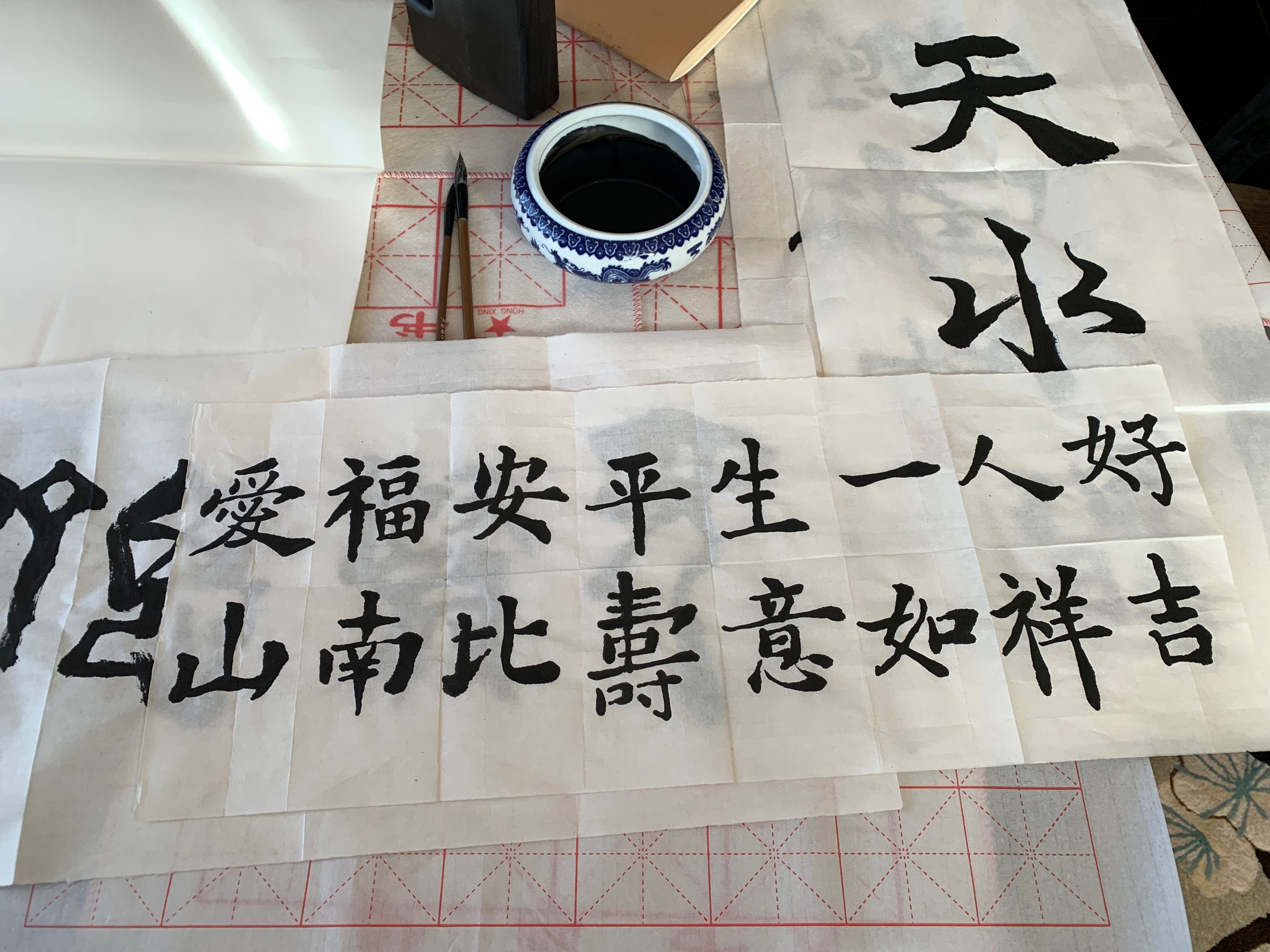
The Tao of Chinese calligraphy
Learning and practicing calligraphy inspired some of my poetry. No wonder that the Chinese poets were masters of the brush art as the two are siblings. Beyond typing on my keyboard, poetry calls for a deeper connection and I believe that only the brush, pen or pencil can deliver that wholesome sense in one’s brain. At least in my own experience. I can type factual articles or stories when I employ my logical right brain. The reason is doing just fine without a deeper, spiritual connection. Poetry is different — it floats above the rational and streams from the unconscious with an inlet from the subconscious mind.
The art of calligraphy is not about developing certain style or doing it perfectly. These are robotic duties of codified scholarly writing. Learning Chinese calligraphy as art is more about the state of mind installed by the practice. Freed from distractions of the outside world, you dwell in a deep focus, guiding the brush according to your current mindset. It can be smooth, fuzzy, interrupted, even violent. The brush can reveal so much about your inner state. As with painting, pottery and drawing, calligraphy has a meaningful potential for psychotherapy.
As with so many learning experiences, trying the art of Chinese calligraphy myself, I was transformed. My appreciation of and understanding of this craft deepened my admiration of the Chinese culture. I am more able to perceive my own state of being and also the mind of the masters whose brush work we admire in museums, galleries and books. The sense of balance, calm and deep penetration into the moment like droplets of black ink realize themselves on the canvas, paper or other medium. This connects me closer to the artist, the gifted creator of the lasting imprint on my own experience.


